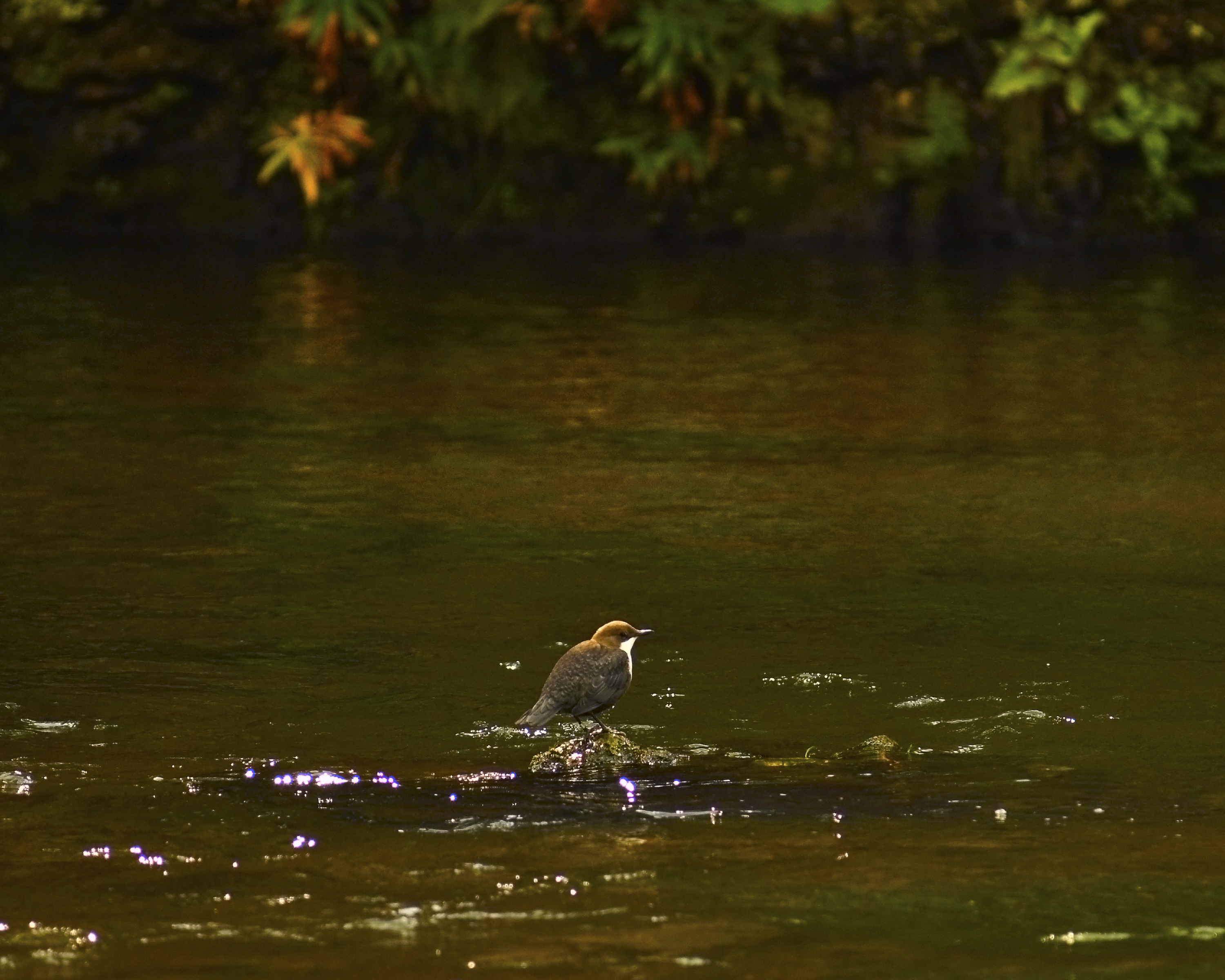Dipper.
I had a real tussle with my heartstrings trying to decide whether ‘D’ would be for dipper, or for Dartford warbler. Both qualify for the accolade of my favourite bird, so how to decide? Toss a coin…
…so, ‘D’ is for dipper.

Don’t let that stop you finding out more about the Dartford warbler though. If you haven’t seen one at all and you’re able to get out and about, have a look on any of our southern heaths: RSPB Arne in Dorset is well worth a look, as is Dunwich Heath in Suffolk, and Yateley Common on the Hampshire/Surrey/Berkshire border is a great place to see them too.
Residents in England’s south eastern counties have to go a bit further afield to see dipper though, as they favour fast-flowing rocky-bottomed rivers, of the sort which are mainly found in the upland areas of Britain and some parts of southwest England.
Also known affectionately as ‘Water Ousel’, a dipper is truly amazing. With a bob rate of up to 60 dips per minute, it isn’t hard to see how it got the name, but what makes the dipper so very special?
Crowned ‘National Bird of Norway’ in 2000, the dipper (Cinclus cinclus) is a marvel of biological design and engineering. Able to walk on the river bed to forage for small fish and invertebrates, a dipper can stay underwater for around 30 seconds at a time. It doesn’t have webbed feet, but it does have some remarkable physiological adaptations to help it master its environment.
As it walks along the riverbed, the dipper counteracts the force of the river currents by stretching out its wings, pushing itself forward and remaining submerged. Having non-webbed feet really helps here, allowing for extra grip on the river floor, and they have an extra eye membrane that protects their eyes but still enables them to see while underwater.
Dipper routinely store oxygen in their muscles, so that it’s available to them when they dive and have to stop breathing, and because they need it to help provide greater muscular control to balance against the force of the current.
Specialised flaps close the nostrils and the bird dives in. Receptors in the blood vessels detect increased levels of carbon dioxide as the dipper stops breathing, this then triggers a response from the brain to slow the heart rate and cause different blood vessels to constrict or dilate as necessary:
- Peripheral blood vessels constrict, reducing heat loss, and blood supply to the digestive system also temporarily shuts down, thus conserving and redistributing energy.
- Blood vessels around the heart and the brain dilate, allowing the extra oxygen that has been set aside to be made available to co-ordinate feeding, walking and functioning underwater.
Admittedly dipper aren’t alone in this, many birds do the same, or similar, to manage hypoxic (low oxygen) environments – think of high altitude migration; sea birds; dabbling ducks and divers. But dipper are the only birds I can think of that actually walk along the river bed to feed, which really is quite incredible. And that’s why I’m glad that ‘D’ was for Dipper.